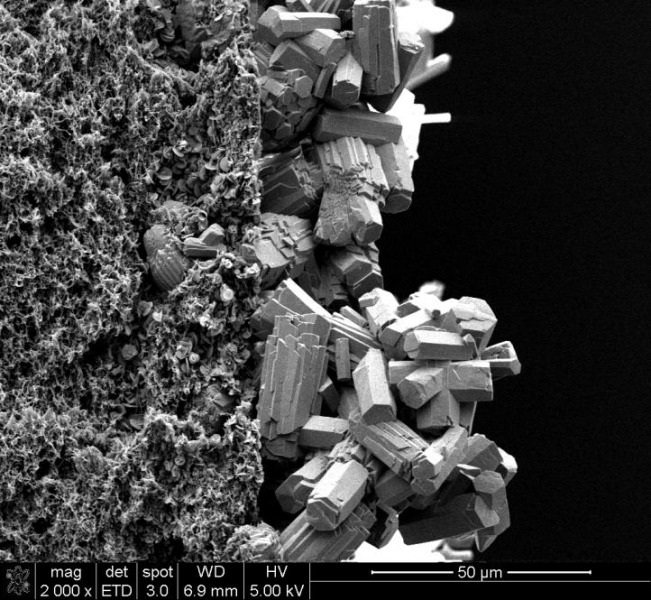Mass and heat transfer in submerged vacuum membrane distillation and crystallization
Membrane distillation-crystallization (MDC) process has great potential for recovery of high quality water and valuable precipitates from effluents of high salt content such as inland brine water. Incorporation of submerging membrane in a feed tank provides opportunity for saving of energy consumption by eliminating the need for feed circulation and reduces the loss of heat. The main challenges in submerged vacuum membrane distillation crystallization (SVMDC) are the reduction of feed temperature (temperature polarization) and the enhancement of feed concentration (concentration polarization) adjacent to membrane surface, which can cause reduction of actual driving force for water vapour transport and induce fouling formation on the membrane surface. Several strategies to reduce the temperature polarization, concentration polarization and fouling are studied, such as thermal water softening as pre-treatment, transverse vibration of the membrane, aeration of feed, periodical air-backwash and periodical cleaning. Those strategies, when conducted simultaneously, results on higher water production and longer operation time of SVMDC. Even though the evaluation of the feed temperature and feed concentration adjacent to membrane surface are important for the process efficiency, it cannot be done experimentally. Numerical simulations were conducted using ANSYS-FLUENT to predict the profile of feed temperature and concentration at various feed concentration, feed temperature and vacuum pressure.
Resarch team: Vicki Chen
Helen Julian
Hongyu Li Greg Leslie
Greg Leslie
Funding body: ARC Discovery DP130104048
